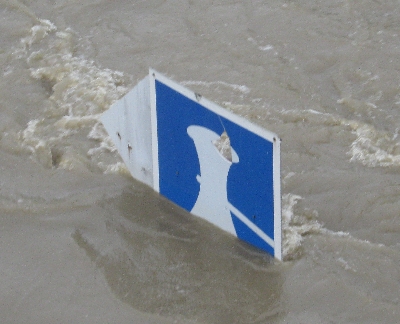This was written and should have been posted late in the evening of Monday 3rd June. However, as I was uploading the photographs, the internet connection to the Chaplaincy Flat died, along with the landline phone. Nearly four days later, we are still without internet or phone. Our provider O2, tells us in a recorded message that they have ‘technical issues in our area’, with no information as to when these ‘technical issues’ will be resolved. We assume that floodwater has got into their system somewhere. I have finally managed to complete this post using the wifi connection in Bar-Restaurace U Topolu whilst eating my lunch 🙂
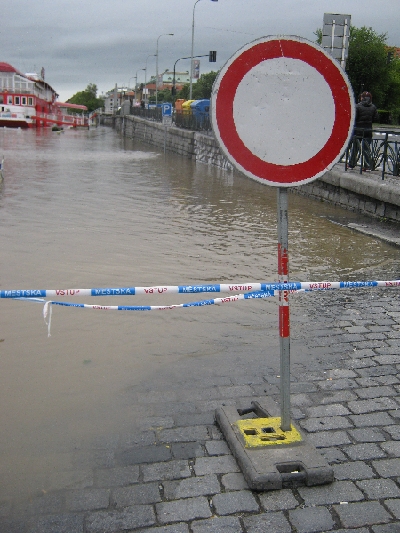
I have previously written on this blog, about flooding in Prague. I wrote that post from a historical perspective and illustrated it with some photographs of flood level markers that can be found on several buildings near to the Vltava River, as flows through the centre of Prague. At the end of my post, I remarked that, as serious flooding seems to have occurred with one hundred year intervals, and the last very serious floods were in 2002, I didn’t expect there to be another occurrence during my lifetime. That was until the events of the past few days.
As well as being cold and miserable, as the weather has been throughout most of May, during the last week it has also been raining pretty consistently too. The inevitable consequence has been a rise in river levels which reached dangerous heights over the past forty-eight hours. This was the scene that greeted us after we walked down to the side of the Vltava after Church on Sunday morning. Normally you can walk along here and there is reserved parking for customers of the Botel Albatross in the distance – hence the ‘P’ sign sticking out of the water.
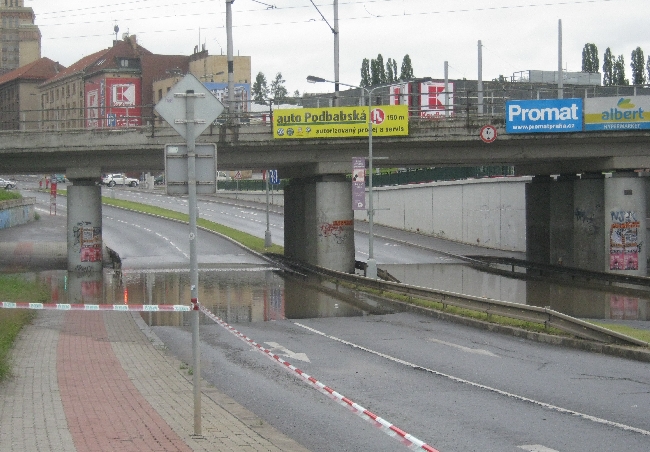
Just beyond the Podbaba tram terminus, on our way home to the Chaplaincy Flat, we were greeted with this view, with the main road completely blocked because of flooding in the underpass beneath the Prague-Dresden railway line. I should add that this flooding has got considerably deeper in the past twenty-four hours.
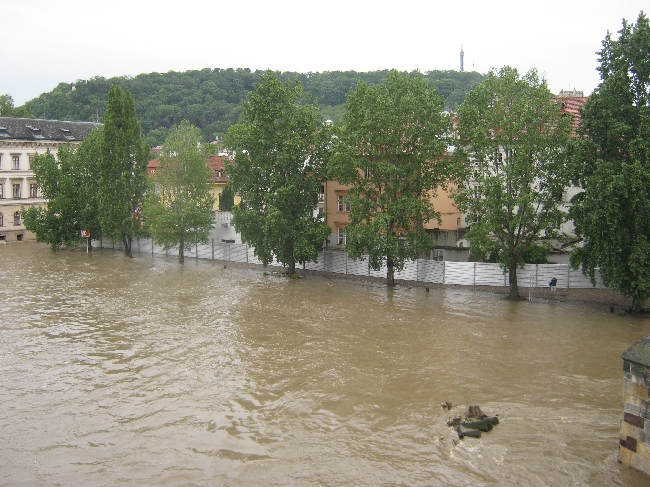
We returned to the city centre later on Sunday afternoon, to get an idea of how severe the flooding was likely to be. At that point in time, it was still possible to walk across Charles Bridge from where I took this photograph which shows the first flood defences having already been erected on Kampa Island. In the foreground, one of the wooden barriers which are meant to protect the buttresses of the bridge, is almost completely submerged.
The photographs that follow were taken by me this morning, Monday 3rd June. I hope they help to illustrate the flood situation as it currently is. Obviously, the situation is fluid if you will excuse my bad pun.
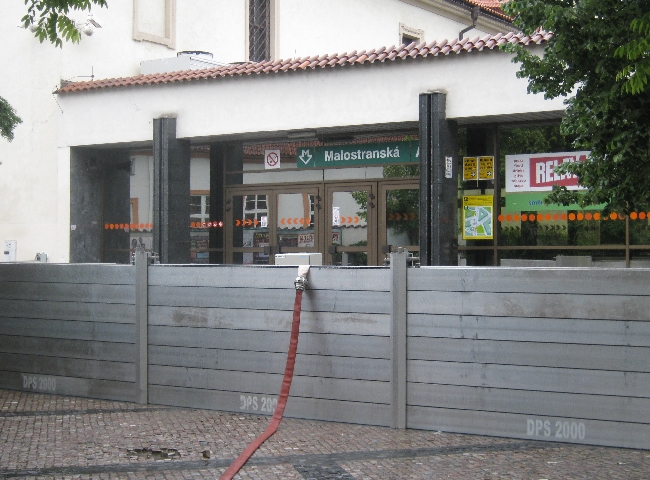
Whilst we were travelling back into the centre of Prague on Sunday afternoon, we heard (and understood !!!) an announcement in Czech, that a a sizeable section of the Metro was being closed until further notice. Basically, any station near the Vltava River has been closed, with flood barriers erected around the entrance, to try to prevent any part of the system being inundated, as here at Malostranská.
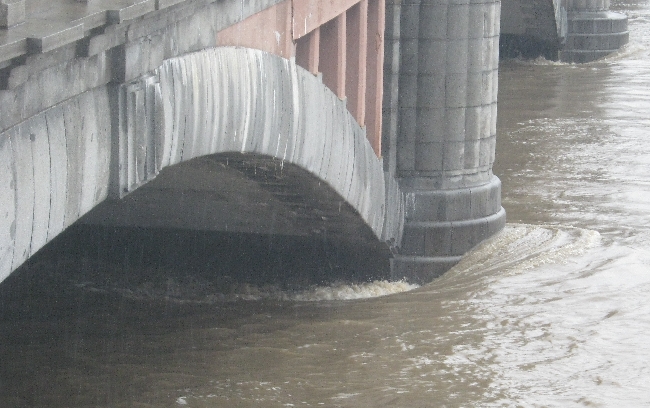
Some indication of the strength of flow in the Vltava.
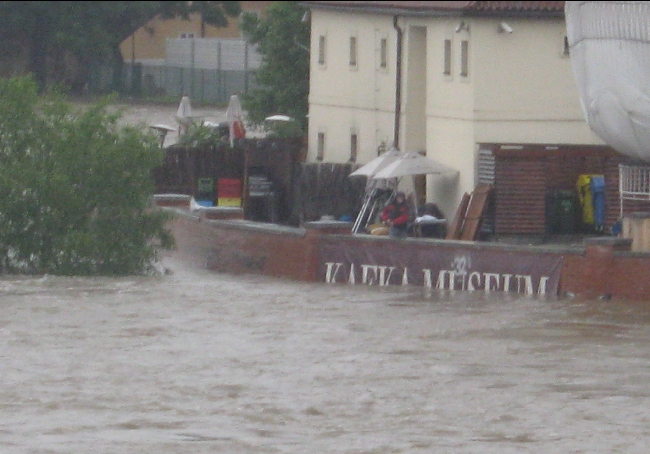
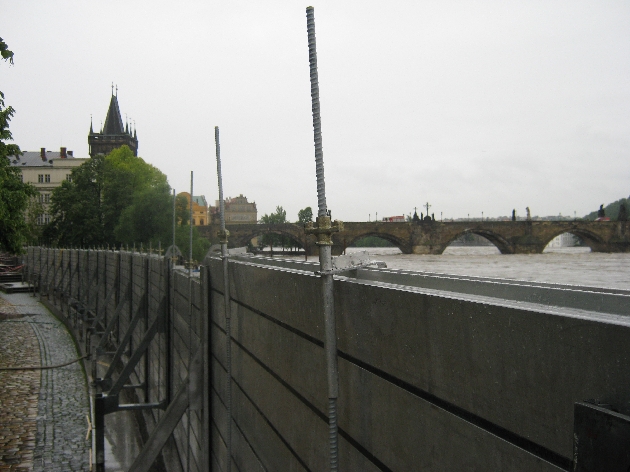
Flood defences were in place all alongside the most vulnerable parts of the historic city centre.
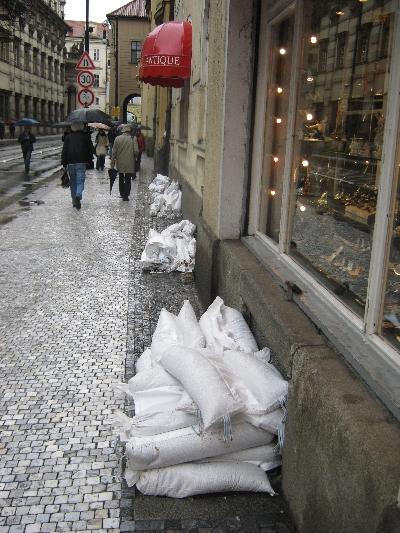
And around the corner, they were busy filling more sandbags!
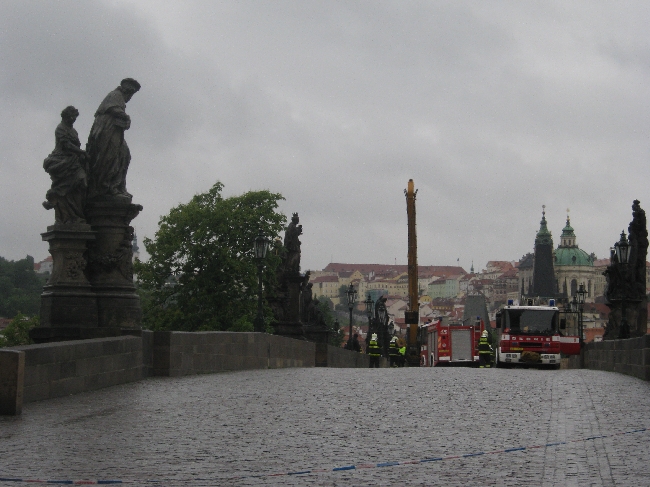
Whilst we had been able to walk across Charles Bridge on Sunday afternoon, later that evening, it was closed to the public. Here the fire service, aided by a mobile crane, are trying to remove large trees and other debris building up against the bridge parapets.

Some buildings that are so close to the Vltava cannot be protected from flooding such as these in the photograph above or this riverside bar in the photograph below.
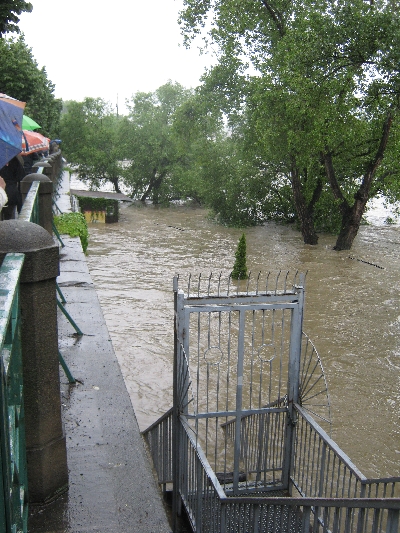
Nor will boats be mooring here for sometime to come!
